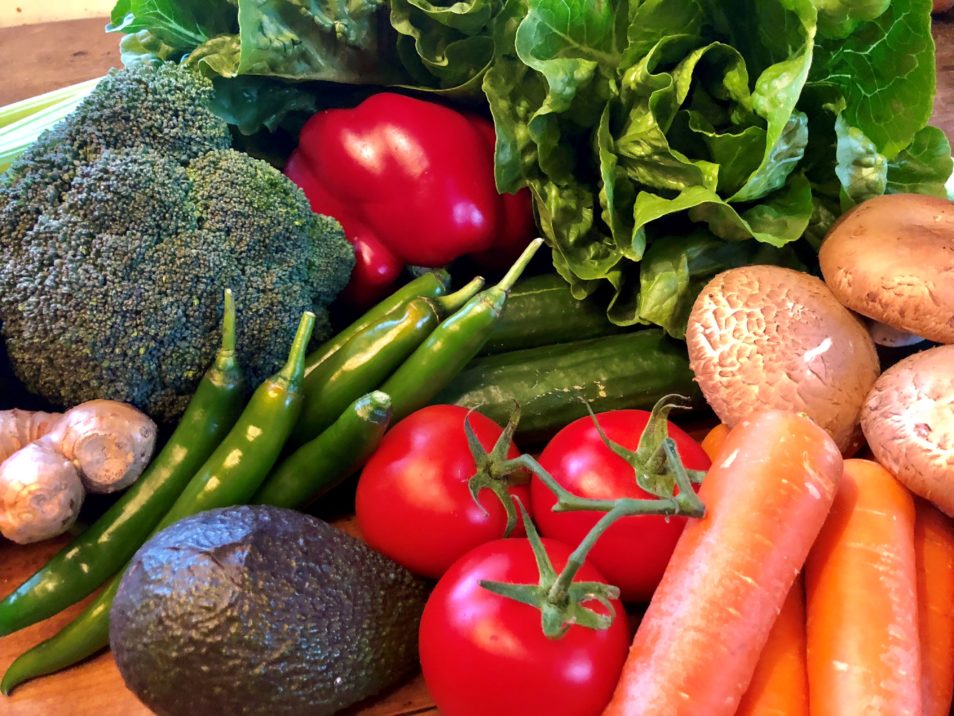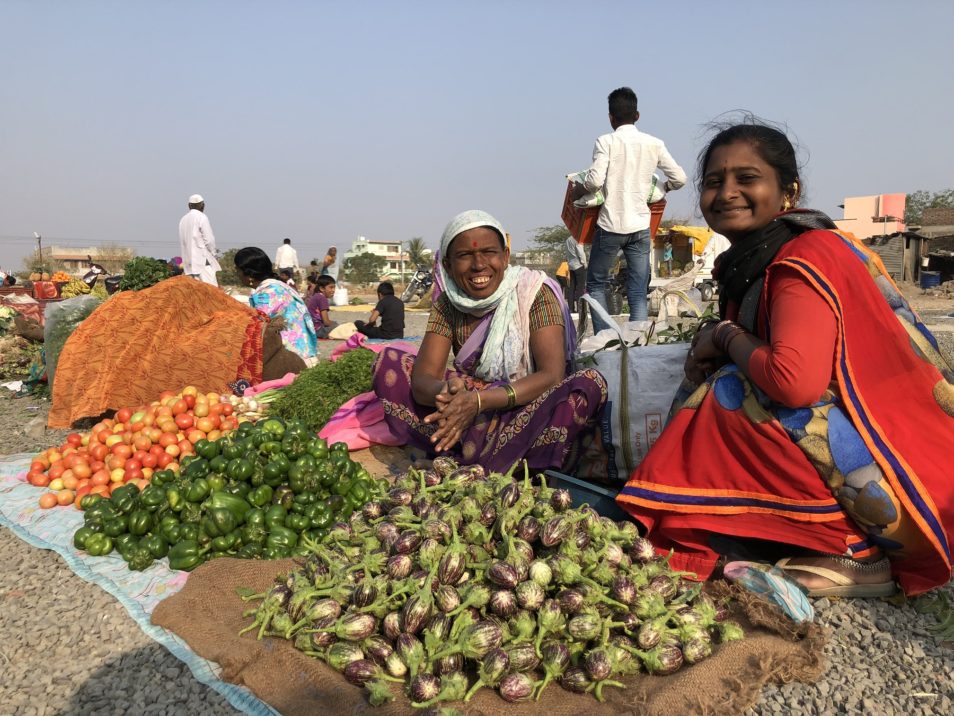
Fresh fruit and vegetables, including tomatoes, broccoli, carrots, capsicum and lettuce
New research shows that there aren’t enough fruit and vegetables available for us to meet dietary recommendations.
How many of us eat the recommended five serves of vegetables and two serves of fruit a day? In 2015 a national survey found only one in 20 Australian adults did just that.
Now new research shows that we are in a worrying cycle of not growing, and therefore not eating, enough fruit vegetables.
Not growing enough fruit and vegetables leads to higher prices. This in turn leads to less demand as they become less affordable. High food waste also increases prices because a portion of what is purchased is spoiled before we even get to eat it.
Lack of consumer awareness and preference also reduces the demand for certain types of fruit and vegetables. For example, not every country has nutritional guidelines in place which inform people about how much fruit and vegetables they need to eat. Another example is that some people might just prefer to eat foods that aren’t as nutritionally dense or are cheaper. This keeps the food market smaller, discouraging more food production.
One of our senior research scientists and lead author of the study, Daniel Mason-D’Croz said unless some changes are made, we’ll remain in this cycle. This could ultimately have serious implications for our health.
What did the research find about fruit and vegetables?
Our scientists worked with colleagues at the International Food Policy Research Institute to study the availability of fruit and vegetables worldwide.
They found that only 81 countries’ average fruit and vegetable availability met the World Health Organization’s (WHO) recommendation of 400g per person per day. This represents 55 per cent of the global population. So, a lot of people are living in countries where the supply of fruit and vegetables is insufficient.
Low fruit and vegetable consumption is a major concern globally, both in developing countries and high-income countries like Australia. Previous studies have suggested that increasing consumption to five servings (400-500g) per person each day would improve health outcomes.
Poor diet is the primary reason many people suffer some form of malnutrition. This has contributed to the high volume of chronic diseases, the main cause of premature death globally.
Back home, it’s been estimated that $269 million could have been saved from public health programs in 2008 if everyone had met fruit and vegetable recommendations.
Eating more fruit and vegetables would contribute to healthier and more balanced diets and decrease the likelihood of disease.

Female vendors selling vegetables in a market in Mumbai, India.
Many countries in Africa, Asia, and the Pacific will unlikely grow enough fruit and vegetable to achieve minimum recommended targets. We need to fix that.
We are getting better, but what does the future hold?
Australia has not been alone in being well below minimum recommendations. In 1965, only 29 countries (about 17 per cent of the global population) achieved average per-capita fruit and vegetable availability above minimum recommendations.
The good news is that we are supplying more fresh fruit and vegetables than we used to. The authors say economic growth has been a major contributing factor to improved nutrition in the 20th century.
We should have the capacity to grow enough fruit and vegetables into the future in Australia. But high levels of food waste could undermine this.
In Australia now, the average fruit and vegetable availability just meets the WHO’s recommended consumption levels. Given this is an average, it means that in some places, consumption is below what’s recommended.
On top of that, many countries in Africa, Asia, and the Pacific will unlikely grow enough fruit and vegetable to achieve the minimum recommended target. Insufficient production, high prices, food waste and relatively low-income levels all contribute to insufficient fruit and vegetables in these regions. There are also issues of accessibility and distribution, making it difficult for people in these regions to access healthy diets.
Mason-D’Croz suggests we need to make more of an effort to increase fruit and vegetable growing. And make fruit and vegetables less expensive to purchase.
We need to invest more in informing people of the importance of healthier diets, and methods to help them make food choices that are healthier and culturally appropriate.
He says innovations are also needed to improve processing, storage and transport to reduce waste.
More broccoli lattes perhaps?


17th November 2022 at 11:39 pm
The content written in your post is very beautiful, I think you have written this content very carefully, every person has some skill in life and you also have a skill, as beautiful as your post looks Is. Beautiful, you have written your words in this, I am very happy to see your post, hope you will keep writing such posts in life.
22nd September 2022 at 5:07 am
Yours is a very informative post. Thank you from the heart
22nd September 2022 at 4:24 am
There’s a lot of sorrow in the world, and it’s definitely not limited to just one person. That’s why it’s so important to have people like you who are willing to share your thoughts and feelings with the rest of the world. You’ve done a great job in doing just that, and we’re grateful for it. Keep up the good work, and we hope to continue getting comments like this one!
19th August 2022 at 10:30 pm
“I don’t know much about love, just when you come in front, the search is over…!” Yours is a very informative comment. Thanks.
20th April 2022 at 1:30 pm
The content written in your post is very beautiful, I think you have written this content very carefully, every person has some skill in life and you also have a skill, as beautiful as your post looks Is. Beautiful, you have written your words in this, I am very happy to see your post, hope you will keep writing such posts in life.